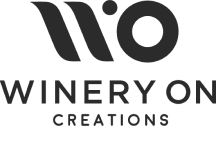Many people ask us what is a red wine, what are its main differences and what is the perfect pairing. For many centuries, red wine has fascinated mankind, making it much more than just a drink.
What is a red wine
Red wine is the result of a complex process that combines the skills of the winegrower and winemaker with the whims of nature. For this reason, the care that is taken throughout the whole process of making wine is vital for its result. From the vineyards to the winery, each stage of red winemaking is a tribute to the art and passion that surrounds it.
Red wine
A red wine is a type of wine that comes mainly from red grape must. It is a wine that is made in a certain way in order to achieve the diffusion of the colouring matter contained in the red grape skins. This aspect gives rise to the red colour of the wine, and justifies the fact that, in other languages, red wine is called red. Clear examples of this are: red wine in Anglo-Saxon countries, vin rouge in French or vino rosso in Italian.
In the case of Spanish, it must be taken into account that the origin of the word tinto can be traced back to Latin, where “tinctus” was used to refer to the dyeing of wine. This would refer to the very process of making red wine.
Phases in the production of red wine
The main stages in the production of a red wine are as follows:
- Destemming
It could be defined as the first step towards perfection.
It is carried out in wineries where tradition meets innovation, and consists of carefully separating the red grapes from their woody stalks. This is a crucial ritual to avoid the transmission of undesirable flavours during fermentation.
- Crushing
This is the release of flavours.
Once the grapes have been freed from their stems, they are subjected to crushing, where the skins are broken to release their precious juice. In this process, the crushing machines do their dance, extracting the liquid that will soon become the elixir of red wine. It is a moment of anticipation and excitement, where the essence of the grape is released to be moulded by the expert hands of the winemaker.
- Alcoholic Fermentation – Maceration
This is the moment of the magic of transformation.
With the grape juice ready for transformation, alcoholic fermentation begins. In wooden or stainless steel tanks, the must turns into wine, thanks to the action of the yeasts that work tirelessly to convert the sugars into alcohol. It is here that the wine acquires its characteristic colour and complexity, extracting the tannins and other elements from the solid parts of the grape.
In Yecla, where the sun and the earth come together in a warm embrace, this process comes to life, giving rise to wines of unique and distinctive character.
- Pressing
This is the moment of concentrated essence.
It happens after fermentation, when it is time to press the skins and pulp to extract the remaining wine. This liquid, known as “press wine”, is an oenological jewel, rich in colour and tannins, which adds depth and complexity to the final wine. On the other hand, the dry pulp that remains at the end of the process finds new purposes. For example, for the creation of products such as pomace and spa treatments, proving that nothing goes to waste in the world of wine.
- Malolactic fermentation
Now it is a question of generating the smoothness of the character. After the first fermentation, the wine undergoes another transformation with malolactic fermentation. Here, bacteria work to convert malic acid into lactic acid, softening the wine’s character and adding a layer of elegance to its flavour. It is a subtle but powerful process, elevating the wine to new heights of refinement and quality.
- Racking
We call this the dance of the wine.
Racking marks the beginning of wine maturation, where impurities are removed and the wine is aerated to improve its quality. In this delicate step, the wine is transferred to new vats to eliminate the lees and sludge that settle to the bottom. It is a crucial moment in the life of the wine, where every movement counts and every decision shapes its final character.
- Clarification
Here we find purity revealed.
To achieve maximum clarity and purity, the wine undergoes a fining process, where the remaining impurities are removed. Whether through the use of gelatines or filters, this step is essential to ensure that the wine is ready for bottling, free of sediment and sediment that can affect its quality.
- Ageing
The moment of the final touch. Ageing is the last step in the red wine’s journey to perfection. Stored in oak barrels, the wine is immersed in a world of flavours and aromas, where time transforms its character and enriches it with unique nuances. In Yecla, this process is a tribute to the passion and commitment of the winegrowers who work tirelessly to produce wines of exceptional quality.
- Bottling
This is the moment when a new adventure begins.
Finally, once the wine is ready for bottling, it is sealed and prepared for its journey into the world. In this sense, we can say that each bottle is a time capsule, a reflection of the care and dedication that has gone into its creation. In Yecla, where history and innovation come together in harmony, DEMUERTE red wine is an outstanding example of the exceptional quality and character that can be achieved through the art of winemaking.
Red wine DEMUERTE
In conclusion, red wine is much more than a beverage; it is the expression of the land, the climate and the passion of man. Every bottle tells a story, and every sip is a unique experience.
From the vines to the barrels, each stage of its production is a tribute to the art and tradition that have made red wine a true treasure of humanity. And proof of this are our DEMUERTE wines.


